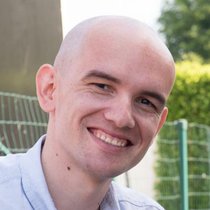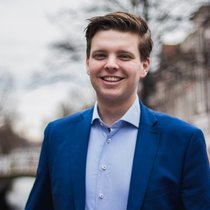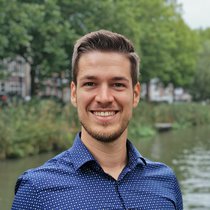This year, Dutch Design Week (DDW) took place both virtually and 'live' in Eindhoven. Many of our experts took part in the week's extensive program of talkshows, installations, and articles. Let's give you a recap, including photos and videos, of our DDW 2021 highlights:
Frame: The Next Space
During Dutch Design Week, Frame organized a one-day cultural accelerator to explore what’s next for spatial design. Frame's motive? To develop a framework for spatial design in which people and the planet can thrive.
During the event, four keynote speakers brought attendees up to speed on the most relevant developments within tech, materials, food and mobility, and how these trends will impact spatial design. Our Scientific Director, Eveline van Leeuwen, hosted one of these keynotes focussed on the topic of sustainable urban food systems.
What will urban agriculture mean for urban planning?
Eveline shed light on what urban agriculture means for urban planning. To consider food systems in all their complexity and all of the spaces they concern, she explained that designers must think about ‘where food is offered and how it impacts the way people make choices’.
After each talk, the event participants discussed these insights in a one-hour 'make-a-thon' in breakout spaces related to spatial design’s four main sectors: retail, urbanism, work and living. During these sessions, it was a time to identify trends currently shaping spatial design, analyze their role in the future city and scribe tangible steps to achieve the resilient city.
“Having food inside the city helps people learn – and care more about – food. It's key to determine how we can collaborate in these spaces to incentivize behavioral change. Furthermore, in order to design sustainable urban food systems, we can’t have big solutions anymore – it’s not one-size-fits-all. There needs to be tailor-made approaches at the spatial, city and regional level.”
Designers responsibility to develop the ideal urban environment
There was a general consensus that designers have a ‘big responsibility’ to adapt their practices to meet the requirements of this ideal urban environment, and considerable time was spent identifying the tools that will prove essential in doing so. Also established was a baseline to acknowledge the ‘responsibilities, profits and ambitions’ that go into each project, with inspiration and incentive given to ‘visualize, make physical and contribute to what has to be done’ on the designer, client and user level alike.
Curious as to what these takeaways will ultimately mean for your individual practice and that of the larger spatial-design industry? Stay tuned for The Next Space white paper, which will bring together the most pressing takeaways from the event and provide a veritable action plan for designing the resilient city.
Curious what the other speakers - Patrick Frick (lead facilitator of the Global Commons Alliance), Kurt Ward (Philips Healthcare senior design director), and Pieter Kool (Carbon Studio founder) - focused on? Read the full recap by Frame here >>
Design United: Up Close & Personal
Next to launching an e-magazine to inspire you with numerous design-related innovations, Up Close & Personal fueled the discussion on Dutch design research by the four technical universities in The Netherlands (4TU). The platform organized daily debates, which were hosted by Isolde Hallensleben. And, being closely connected to both WUR and TU Delft, AMS Institute contributed to the program of Up close and Personal with several innovative projects.
This year's discussions centered around the following themes: Entangled Ecologies, Connected Interactions, Changing Things, Embedded Designers, and Evolving Methodologies.
How to design a responsible Smart City?
Let's zoom into Up Close & Personal's second theme 'Connected Interactions'. This topic brings home the idea that interacting with something can be meaningful for a particular time and place or can be alien to it, has impact on other interactions taking place, and can even transcend particular situations, producing effects beyond the local circumstances.
As part of this theme, we showcased our Our Responsible Sensing Lab (RSL) - a collaboration with the City of Amsterdam. In short, RSL explores how to integrate social values in the design of sensing systems in public space. Coen Bergman (co-initiator of RSL and Innovation Developer Public Tech at the City of Amsterdam's CTO Office) took part in the talkshow and prototypes of our projects Shuttercam and Shutterring have been exhibited in the Klokgebouw expo.
To illustrate, what if cameras are equipped with shutters showing us when the camera ‘sees’ you or not? Among others, the Lab's Shuttercam project explores how the design of cameras in public space can contribute to a ‘responsible’ Smart City. Why and how did this project originate? What does data minimization entail and how do shutters adhere to this principle? And what are our plans for the future with these projects?
Check out the entire Connected Interactions talkshow here (zooming in on RSL at 00:20:15 min) or learn more about RSL specifically with the video below:
Responsible Sensing Lab | Shuttercam & Shutterring | Design can play a role to show when cameras are (not) in use
By the way, if you've followed along with our Responsible Sensing Lab developments, you'd know that the team has manyfold new responsible designs and prototypes developed. To cover all recent innovations, the project team also recently launched a new site. Here, you can for example also find 3D print files if you'd like to print and assemble your own shutter ring. Check out the new website >>
Can space technology provide circular solutions for cities?
Also with regards to the Connected Interactions theme, we showcased our Space for Food project. This project investigates if space technology can provide circular solutions for cities. In other words: what if we view “cities as spaceships”; in terms of urban environments being ‘closed-loop systems’.
In short, at Marineterrein Amsterdam Living Lab, our researchers examine how we can use space tech developed by the European Space Agency (ESA) in an urban context to extract nutrients and water from wastewater for sustainable food production. And as such, increase circularity in a city like Amsterdam. Curious about the potential and scalability of this innovation?
Take a look at the full talkshow on Connected Interactions here or learn more about Space for Food with the video below:
“Joining the talkshow showed that "thinking like an astronaut" is a powerful design principle that can help look at food systems from a systemic viewpoint. It also proved again that space exploration is very inspiring and technology transfer for the benefit of Earth is crucial to achieving sustainability.”
Radu Giurgiu | R&D Project Manager | SEMiLLA IPStar

Can we make Amsterdam cooler with moss walls?
Linked to the Entangled Ecologies theme, Up Close & Personal showcased how design materials create new entanglements and lead to unforeseen results. Think about some of the challenges our cities face: heat stress, water retention and air pollution. What if moss-covered walls can be part of the solution to make cities climate resilient?
At Marineterrein Amsterdam Living Lab, the TU Delft startup Respyre experiments if "moss walls" can help make our cities cooler and more livable. This Dutch Design Week, Auke Bleij - Business and Technology Developer at Respyre - was a speaker in the Up Close & Personal talkshow.
Check out the full talkshow on Entangled Ecologies here or learn more about Respyre with the video below:
“The talkshow was very nice to be a part of, it among others emphasized the role we as designers have to realize this sustainability shift into a success. To illustrate, we encountered many new ways of designing our future homes in a sustainable way. Also, The group in which we operated was focused on non-human centered design - I found this vision particularly interesting as we weren't familiar with it before.”
Auke Bleij | Business and Technology Developer | Respyre

The Embassy of Mobility Conference
As metropolitan area's continue to grow, so does the number of people that move around. More commuting also means more issues related to traffic such as congestion, crowded streets, and increasing pressures on fragile infrastructures. Think about this: what if mobility improves people’s well-being and stimulates connection? Or what if mobility positively contributes to the environment? At 'the Embassy of Mobility Conference' we explored the future of mobility.
How does design impact the future of mobility?
Cities worldwide face the challenge of finding better ways to design and manage urban mobility. During Dutch Design Week, we joined the EIT Urban Mobility hub. Here, our program manager on the topic of Smart Urban Mobility, Tom Kuipers, shared the latest on the following projects: CityFlows, Code the Streets and SmartHubs.
Join us in testing this new navigation app
To illustrate, with Code the Streets, a joint effort of public and private partners from Amsterdam and Helsinki, we focus on creating new mobility management tools. Did you know you can sit in the driver's seat of this innovative project?
Currently we're looking for car owners who want to test a new navigation app. The app encourages drivers to choose an alternative, more 'social' route by using data about school zones, traffic jams, vulnerable infrastructures (such as docks and bridges), and environmental zones. Sign up here >>
“Today’s cities are looking for better ways to manage the livability of urban space. Code the Streets is a joint effort of cities, service providers and science to stimulate car-users to choose safer, more sustainable routes to improve urban mobility.”
Sander Oudbier
Program Manager Smart Urban Mobility
Thanks to our vibrant community for sharing your expertise and enthusiasm during the events this Dutch Design Week 2021, and to our DDW partners: we look forward to next year!
